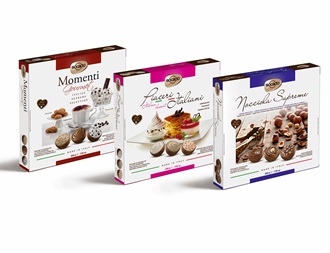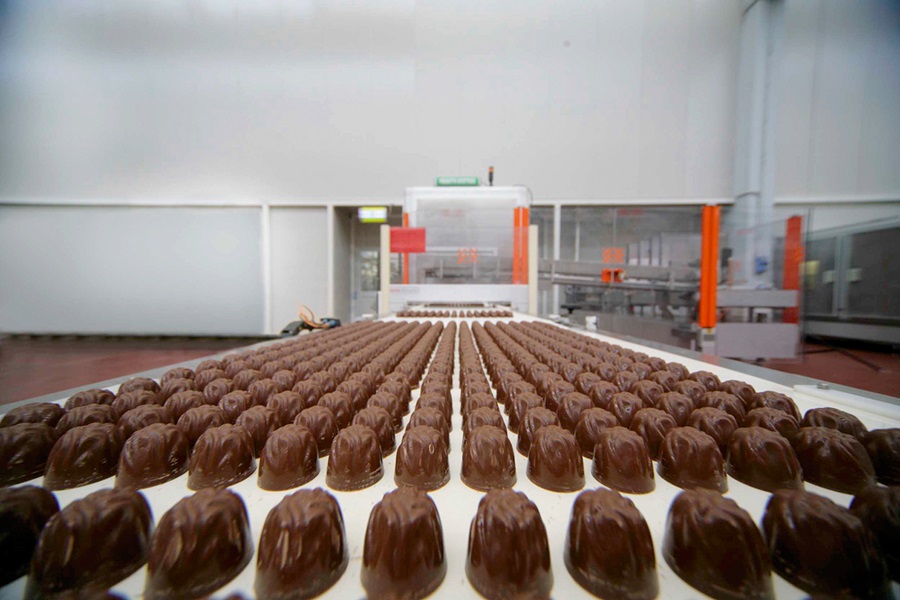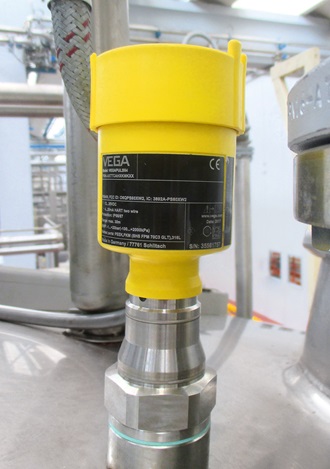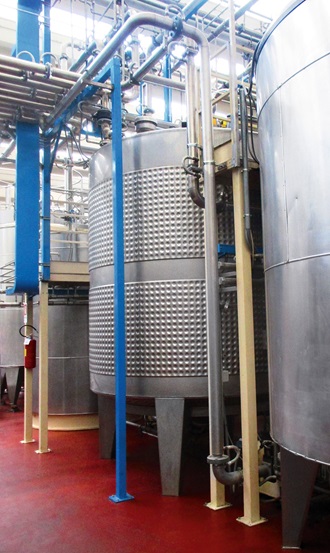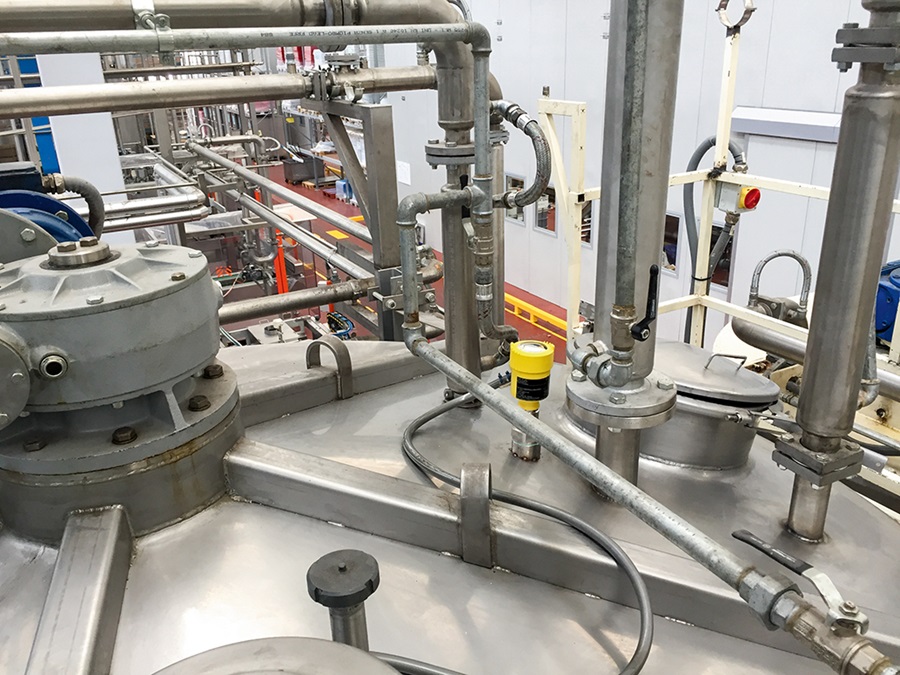VEGAPULS 64 monitors the level in chocolate cream tanks. The perfect melt. |
VEGAPULS 64 measures reliably even when faced with viscous build up, in this case chocolate, and difficult installation situations, e.g. caused by agitators.
The level measurement is carried out over the entire tank height without a blocking distance, i.e. dead band, which is common with ultrasonic sensors. Due to this, the sensor measures with high accuracy at the top as well as at the bottom of the tank. The tank volume can thus be used to the full. And for Socado, it was also very important that the sensor doesn’t require maintenance.
The new level sensor is also ideal from a hygienic point of view. For one thing, radar level transmitters lend themselves well for such applications, because they employ contactless measurement, thus ensuring optimal hygienic conditions. And for another, the front-flush, encapsulated antenna is easy to clean and resistant to the extreme conditions of SIP and CIP processes.
Products
We need your consent
This content is provided by an external provider. If you activate the content, personal data may be processed and cookies set.
Export this article
Download as PDFShare this article
Comments ({{comments.length}})
{{getCommentAuthor(comment, "Anonymous")}} {{comment.timestamp | date : "dd.MM.yyyy HH:mm" }}
{{comment.comment}}

